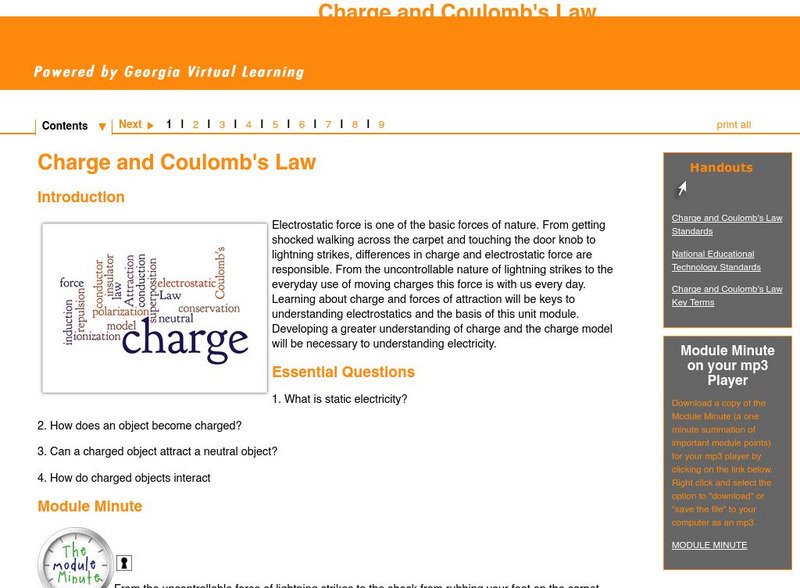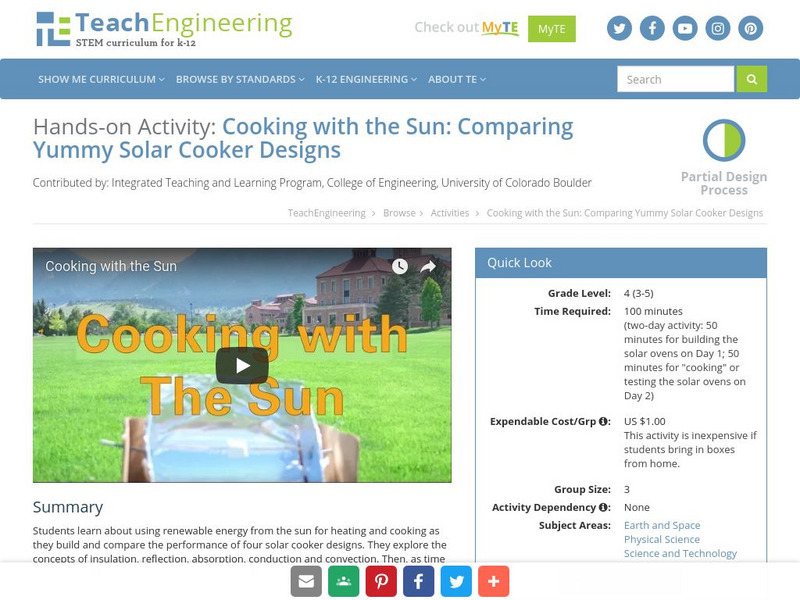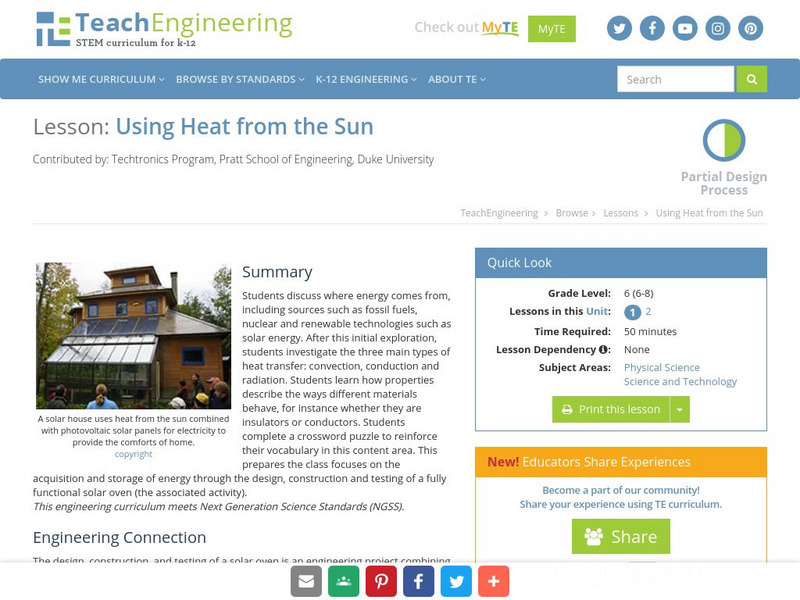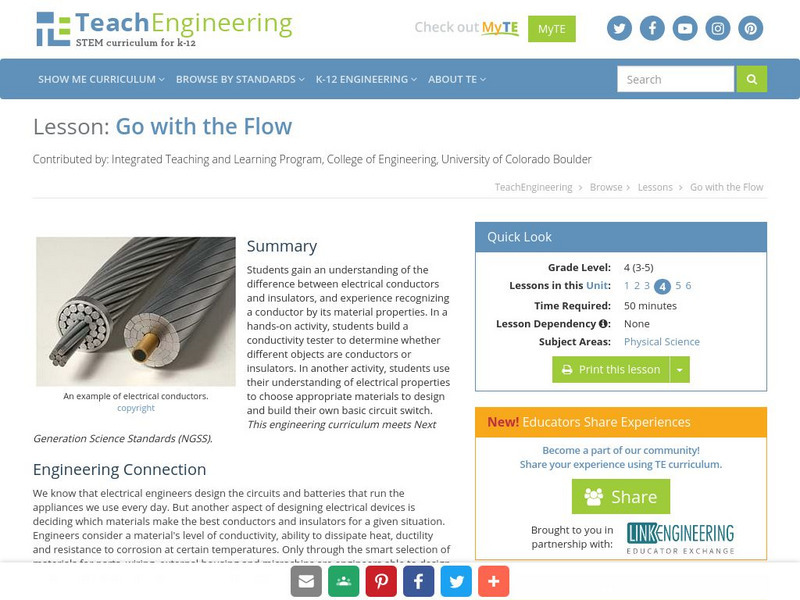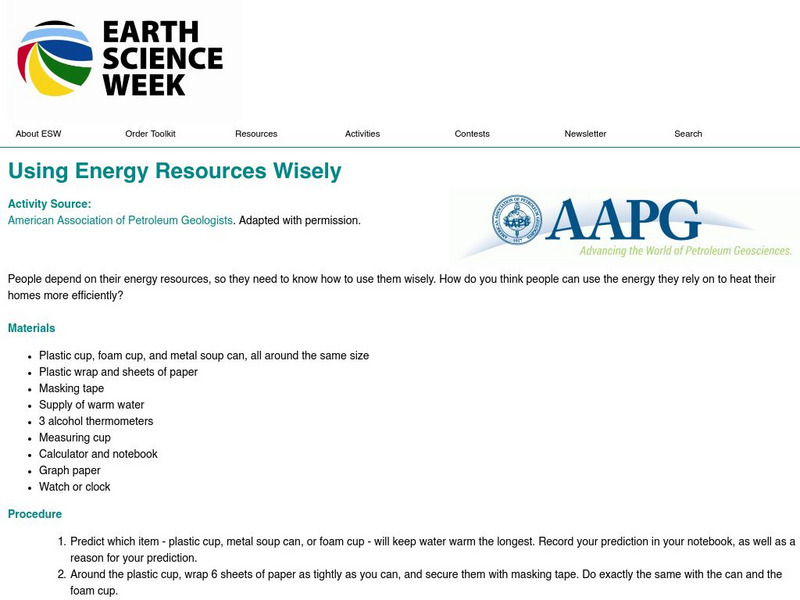OpenStax
Open Stax: College Physics: Conduction
In this section of the textbook, learn about how heat is transferred by conduction. Section explores how to calculate thermal conductivity and studies the thermal conductivities of common substances. Also included are problems with...
Other
Fact index.com: Thermal Conductivity
Fact-Index.com offers an excellent site on thermal conductivity. Includes table of contents, hyperlinked terms, and formulas.
Georgia Department of Education
Ga Virtual Learning: Charge and Coulomb's Law
Learning about charge and forces of attraction will be keys to understanding electrostatics and the basis of this learning unit. Developing a greater understanding of charge and the charge model is necessary to understanding electricity.
TeachEngineering
Teach Engineering: Cooking With the Sun
Students learn about using renewable energy from the Sun for heating and cooking as they build and compare the performance of four solar cooker designs. They explore the concepts of insulation, reflection, absorption, conduction and...
TeachEngineering
Teach Engineering: Using Heat From the Sun
For this lesson, learners will first discuss where energy comes from, including sources such as fossil fuels, nuclear, and such renewable technologies as solar. After this initial exploration, students will investigate the three main...
TeachEngineering
Teach Engineering: Go With the Flow
Students gain an understanding of the difference between electrical conductors and insulators, and experience recognizing a conductor by its material properties. In a hands-on activity, students build a conductivity tester to determine...
Science Buddies
Science Buddies: Bake Your Ice Cream
This activity will teach you how it is even possible to bake ice cream in a hot oven and have it come out frozen.
American Geosciences Institute
American Geosciences Institute: Earth Science Week: Using Energy Resources Wisely
Students test which type of material retains heat the longest.
TeachEngineering
Teach Engineering: Testing Fundamental Loads
Students will conduct several simple lab activities to learn about the five fundamental load types that can act on structures: tension, compression, shear, bending, and torsion. In this activity, students break foam insulation blocks by...


